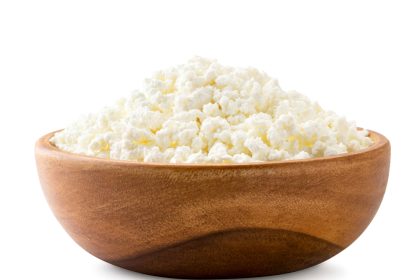The spice rack in most American kitchens contains a hidden danger that millions of people unknowingly face every day. While spices add flavor and depth to favorite dishes, certain common seasonings can trigger severe allergic reactions that cause tongue swelling, difficulty breathing, and potentially life-threatening complications. Understanding which spices pose the greatest risk helps protect families from dangerous reactions while maintaining delicious home cooking.
Spice allergies affect approximately 2% of the population, though many cases go undiagnosed because symptoms can be subtle or mistaken for food poisoning. Unlike other food allergies that often develop in childhood, spice sensitivities can emerge at any age, catching people off guard when familiar foods suddenly become problematic. The delayed nature of some reactions makes identifying trigger spices particularly challenging.
The tongue serves as an early warning system for allergic reactions, often swelling within minutes of exposure to problematic spices. This swelling, medically known as angioedema, occurs when blood vessels dilate and leak fluid into surrounding tissues. What starts as mild tingling can rapidly progress to significant swelling that interferes with speaking, swallowing, and breathing.
1. Cinnamon triggers dangerous mouth reactions
This beloved baking spice ranks among the most common culprits for oral allergic reactions. The compound cinnamaldehyde, which gives cinnamon its distinctive flavor and aroma, can cause immediate tongue swelling in sensitive individuals. Both Ceylon and cassia cinnamon varieties contain this reactive substance, though cassia cinnamon typically has higher concentrations.
Cinnamon allergies often manifest as burning sensations in the mouth, followed by swelling of the tongue, lips, and inner cheeks. The reaction can occur from consuming cinnamon-flavored foods, beverages, or even chewing gum. Some people experience delayed reactions that develop hours after exposure, making the connection to cinnamon consumption less obvious.
Beyond tongue swelling, cinnamon allergies can cause skin rashes, digestive upset, and respiratory symptoms. Contact dermatitis from handling cinnamon powder affects some individuals, creating red, itchy patches on hands and arms. The spice’s widespread use in processed foods means avoiding exposure requires careful label reading and ingredient awareness.
2. Paprika causes hidden allergic responses
Derived from dried bell peppers and chili peppers, paprika appears in countless dishes as both a flavoring agent and colorful garnish. The protein compounds in paprika can trigger allergic reactions that begin with mouth tingling and progress to tongue swelling. Sweet paprika, smoked paprika, and hot paprika varieties all contain similar allergenic proteins.
Many people with paprika allergies also react to other members of the nightshade family, including tomatoes, potatoes, and bell peppers. This cross-reactivity makes managing the allergy more complex, as multiple foods may need elimination from the diet. The condition often develops in adulthood, surprising individuals who previously enjoyed these foods without problems.
Paprika frequently appears in seasoning blends, restaurant dishes, and processed foods where its presence may not be immediately obvious. Barbecue seasonings, curry powders, and spice rubs commonly contain paprika as a primary ingredient. Even small amounts can trigger reactions in highly sensitive individuals, making thorough ingredient checking essential.
3. Mustard seed sparks severe swelling
Mustard ranks as one of the top allergens in many countries, though it receives less attention in the United States despite causing serious reactions. The proteins in mustard seeds remain stable during processing, meaning they retain their allergenic potential in prepared mustard, mustard powder, and foods containing mustard ingredients.
Tongue swelling from mustard allergies can develop within minutes of consumption and may be accompanied by throat tightness and difficulty swallowing. The reaction often begins with a metallic taste or burning sensation before progressing to visible swelling. Some individuals experience full-body reactions including hives, digestive symptoms, and breathing difficulties.
Mustard appears in unexpected places including salad dressings, marinades, processed meats, and ethnic cuisines. Indian, Mediterranean, and European dishes frequently incorporate mustard seeds or powder as flavoring agents. Cross-contamination during food preparation can also introduce mustard proteins into supposedly mustard-free dishes.
4. Coriander seeds create oral inflammation
Also known as cilantro seeds, coriander represents another common spice that can cause tongue swelling and oral allergic reactions. The essential oils and proteins in coriander seeds differ from those in fresh cilantro leaves, meaning some people react to one form but not the other. Ground coriander appears in many spice blends and international cuisines.
Coriander allergies often cause burning sensations in the mouth followed by swelling of the tongue and oral tissues. The reaction may extend to the throat, causing tightness and difficulty swallowing. Some individuals experience delayed reactions that occur several hours after consuming coriander-containing foods.
The spice appears frequently in Middle Eastern, Indian, and Mexican cuisines, often combined with other potentially allergenic spices. Curry powders, garam masala, and taco seasonings commonly contain ground coriander. Restaurant meals pose particular challenges since coriander use may not be disclosed on menus or known by serving staff.
5. Fennel produces tongue reactions
This licorice-flavored spice can trigger allergic reactions that begin with tongue tingling and progress to significant swelling. Fennel seeds contain compounds that some immune systems identify as threats, leading to inflammatory responses in the mouth and throat. Both whole fennel seeds and ground fennel powder can cause reactions.
Fennel allergies sometimes occur alongside reactions to other plants in the carrot family, including celery, carrots, and parsley. This botanical relationship means individuals with known allergies to one member may need to avoid related plants. The cross-reactivity can make identifying safe foods more complicated.
Italian cuisine frequently incorporates fennel seeds in sausages, marinades, and seasoning blends. The spice also appears in some teas, liqueurs, and digestive aids. People with fennel allergies must remain vigilant about checking ingredient lists and asking about spice use in restaurant preparations.
Recognizing the warning signs
Spice allergies typically begin with subtle symptoms that can easily be overlooked or attributed to other causes. Initial signs include tingling, burning, or numbness in the mouth shortly after consuming problematic spices. The tongue may feel thick or swollen even before visible changes occur.
As reactions progress, the tongue visibly enlarges and may develop a smooth, shiny appearance. Speaking becomes difficult, and swallowing may feel uncomfortable or painful. The swelling can extend to the lips, cheeks, and throat, potentially compromising breathing passages.
Systemic reactions can accompany oral symptoms, including skin rashes, digestive upset, and respiratory problems. Severe allergic reactions may cause blood pressure drops, rapid pulse, and loss of consciousness. These life-threatening situations require immediate emergency medical attention.
Managing spice allergies safely
Identifying trigger spices requires systematic elimination and careful observation of symptoms. Keeping a detailed food diary helps track reactions and identify patterns. Working with allergists can provide definitive testing and professional guidance for managing multiple food sensitivities.
Reading ingredient labels becomes essential for avoiding problematic spices, especially since they often appear in processed foods under various names. Spice blends and seasoning mixes pose particular challenges since individual components may not be listed. When in doubt, contacting manufacturers directly can provide detailed ingredient information.
Restaurant dining requires clear communication about allergies and potential cross-contamination risks. Many establishments cannot guarantee complete allergen avoidance due to shared preparation surfaces and equipment. Carrying emergency medications and knowing how to use them provides important safety backup.
Alternative flavoring strategies
Eliminating problematic spices does not mean sacrificing flavorful cooking. Fresh herbs often provide safe alternatives to dried spices while adding complexity to dishes. Citrus zests, vinegars, and infused oils can enhance flavors without triggering allergic reactions.
Exploring single-ingredient spices rather than blends allows better control over potential allergens. Creating custom spice mixtures at home ensures knowledge of every ingredient while maintaining favorite flavor profiles. Gradual experimentation helps identify safe alternatives that satisfy taste preferences.
Some individuals find they can tolerate small amounts of trigger spices when combined with other foods, though this approach requires extreme caution. Others discover that certain processing methods or spice sources cause fewer reactions. Professional guidance helps determine safe limits and appropriate precautions.
Building awareness and prevention
Spice allergies remain underrecognized despite their potential severity and growing prevalence. Increased awareness among food service workers, healthcare providers, and the general public could prevent many dangerous reactions. Better labeling requirements for spice ingredients would help consumers make informed choices.
Education about cross-reactivity between related plants helps individuals understand their personal risk factors. Many people with spice allergies discover they react to multiple related substances, making comprehensive allergy testing valuable for safety planning.
The hidden nature of many spice allergies means symptoms may develop gradually or be attributed to other causes. Taking tongue swelling and oral reactions seriously, regardless of their apparent cause, can prevent progression to more dangerous systemic reactions. Early recognition and appropriate response save lives while preserving the joy of safe, flavorful eating.


















